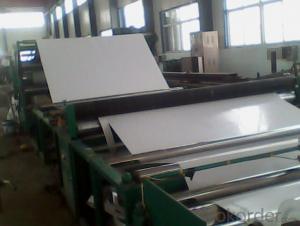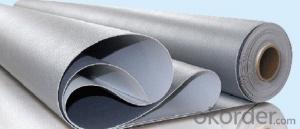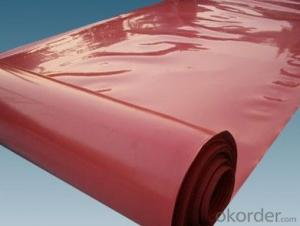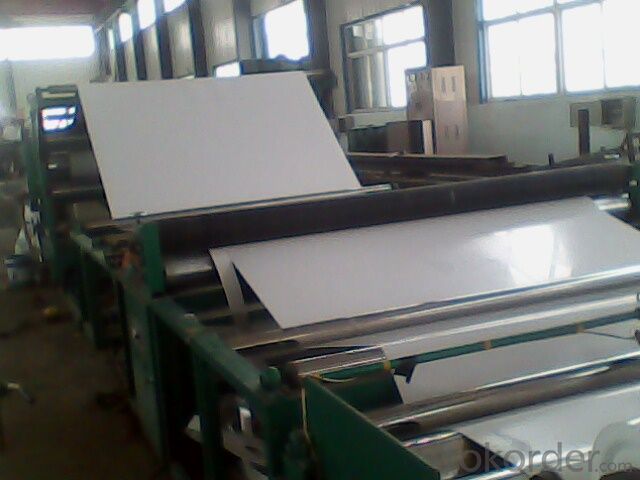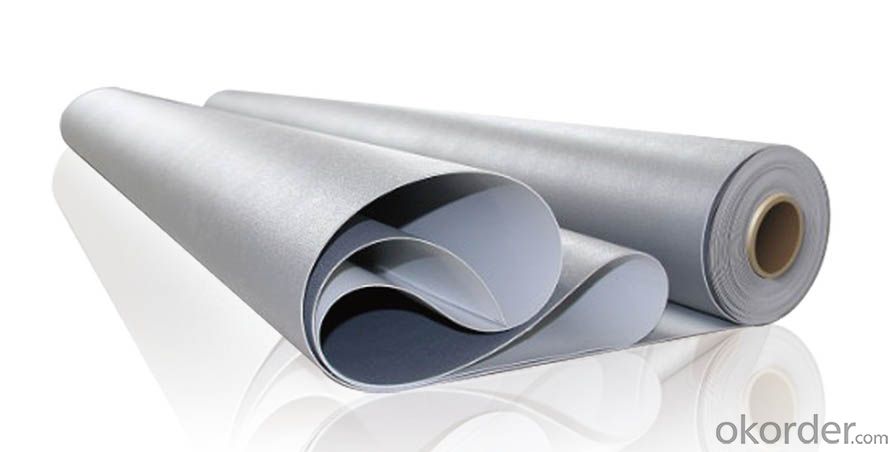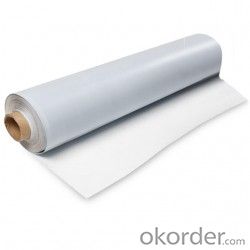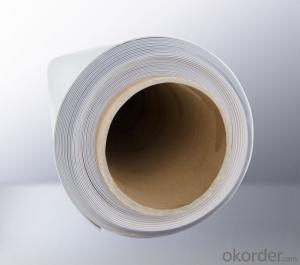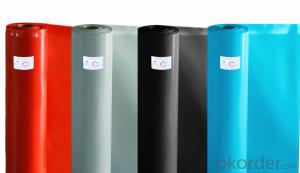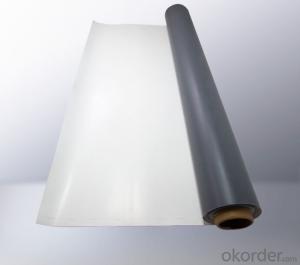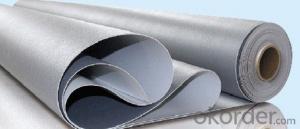Products Description of Thermoplastic Polyolefin (TPO) waterproof membrane
- Loading Port:
- Qingdao
- Payment Terms:
- TT or LC
- Min Order Qty:
- 20000 m²
- Supply Capability:
- 600000 m²/month
OKorder Service Pledge
OKorder Financial Service
You Might Also Like
Products Description of Thermoplastic Polyolefin (TPO) Waterproof Membrane:
The Thermoplastic Polyolefin (TPO) waterproof membranes are the most popular waterproof materials in the world at present. It’s thermoplastic elastomeric waterproof materials by adopting advanced polymerization together with squeeze technology,which perform well in mechanical properties, high tensile strength,oxidation-resistance and resistance to puncture.
Product Features of Thermoplastic Polyolefin (TPO) Waterproof Membrane:
1.High UV-resistance and high reflectivity
2. Excellent weathering characteristics and long-term flexibility
3.High tensile strength and puncture resistance
4. Excellent resistance to harsh chemicals and industrial pollutas
5.Heat or solvent-welding effectively provides seamless roof covering
TPO Physical Properties of Thermoplastic Polyolefin (TPO) Waterproof Membrane:
Item | Specification | |||||||
H | L | P | G | GL | ||||
The resin thickness of Middle fabric, mm≥ | — | 0.40 | ||||||
Maximum tension,N/cm ≥ | — | 200 | 250 | — | 200 | |||
Tension strength,Mpa≥ | 12 | 12 | ||||||
Maximum tension elongation,%≥ | 15 | |||||||
Fracture elongation,%≥ | 500 | 250 | 400 | 200 | ||||
Heat treatment size change rate %≤ | 2.0 | 1.0 | 0.5 | 0.1 | 0.1 | |||
Low temperature bend | -40°C No crack | |||||||
Water tightness | 0.3Mpa,2h, No seepage | |||||||
Attack resistance | 0.5kg·m,No seepage | |||||||
Static charge resistance | — | 20kg ,No seepage | ||||||
Seam strip strength ,N/mm≥ | 4.0 or Membranes break | 3.0 | ||||||
Right-angle tear strength,N/mm≥ | 60 | 60 | ||||||
Trapezoid tear strength N≥ | — | 300 | 450 | 350 | ||||
Bibulous rate (70°C 168h), % | After soaking≤ | 4.0 | ||||||
Air-cure later≥ | -0.40 | |||||||
Heat aging (115°C)
| Time | 672h | ||||||
Appearance | No blister,flaw,delamination,coherence,hole | |||||||
Tensile strength retention,%≥ | 90 | |||||||
Elongation rate of keeping,%≥ | 90 | |||||||
Low temperature bend | -40°C, No crack | |||||||
Chemistry resistance | Appearance | No blister,flaw,delamination,coherence,hole | ||||||
Tensile strength retention,%≥ | 90 | |||||||
Elongation rate of keeping,%≥ | 90 | |||||||
Low-temperature bending | -40°C, No crack | |||||||
Artificial weather accelerated aging | Time | 1500hb | ||||||
Appearance | No blister,flaw,delamination,coherence,hole | |||||||
Tensile strength retention%≥ | 90 | |||||||
Elongation rate of keeping%≥ | 90 | |||||||
Low temperature bend | -40°C ,No crack | |||||||
FRQ:
What is your main market?
Our Tpo Roofing Membrane with Superior Raw Material for Roofing Market sells very well in USA, United Kingdom, Austrilia, Canada, Japan, Pakistan, etc.
What is your advantage for Tpo Roofing Membrane?
With the most advanced production line, our good quality is based on superior material imported from America. We have different color available and could produce any color you want.
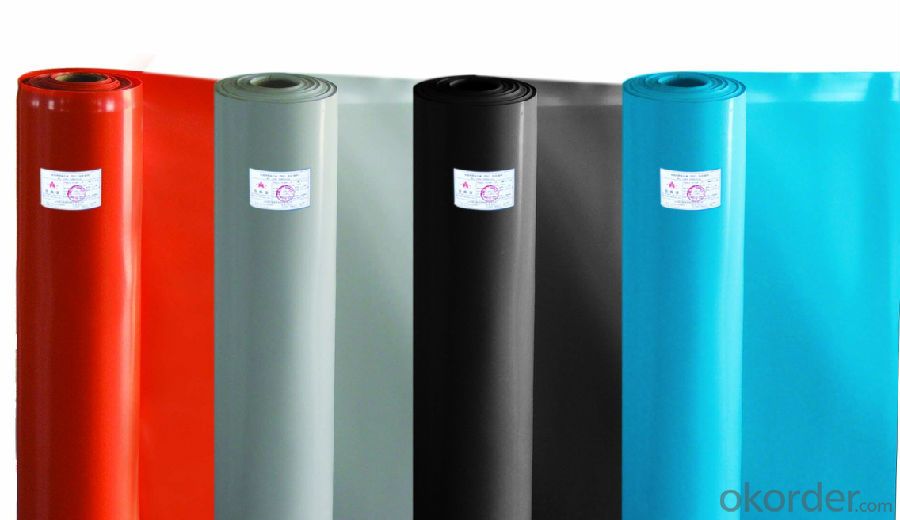

- Q: Are waterproofing membranes resistant to fire?
- Waterproofing membranes possess the ability to resist fire. To guarantee the structure's safety, numerous waterproofing membranes are engineered with fire-resistant properties. These membranes typically consist of materials with exceptional fire ratings, effectively preventing the spread of flames. They are commonly employed in locations where fire safety is a priority, such as commercial buildings, high-rise structures, and industrial facilities. Furthermore, relevant authorities often subject these membranes to rigorous testing and certification to ascertain their fire resistance capabilities. Nevertheless, it is imperative to recognize that not all waterproofing membranes offer fire resistance. Hence, it is crucial to carefully select the appropriate membrane based on the specific fire safety requirements of the project.
- Q: Can a waterproofing membrane be installed on a concrete foundation?
- Installing a waterproofing membrane on a concrete foundation is indeed a common practice. This is done to prevent water infiltration and safeguard the structure from moisture-related harm. Typically, the membrane is applied to the exterior surface of the foundation walls, serving as a barrier against water and moisture. The type of membrane used can vary, ranging from liquid-applied to sheet membrane or a combination of both, depending on the project's specific requirements. Its purpose is to act as a protective layer, preventing water from penetrating the foundation and causing issues like dampness, mold growth, and structural decay. By incorporating a waterproofing membrane into a concrete foundation, homeowners and builders can guarantee the structure's long-term durability and integrity.
- Q: Can a waterproofing membrane be used in conjunction with insulation materials?
- Yes, a waterproofing membrane can be used in conjunction with insulation materials. The membrane acts as a barrier to prevent water infiltration, while insulation materials provide thermal resistance to control heat flow. This combination is commonly used in construction to ensure both waterproofing and insulation performance.
- Q: Does a waterproofing membrane prevent water damage to building materials?
- A waterproofing membrane is specifically designed to shield building materials from water damage. Its purpose is to act as a barrier, preventing water from infiltrating the structure and causing harm. Typically, the membrane is applied to areas prone to water intrusion, such as roofs, basements, and foundations. By creating a watertight seal, it effectively stops water from seeping through and harming the building materials. This safeguard is essential in maintaining the structure's integrity and preventing issues like mold growth, rot, and material decay. However, it's crucial to acknowledge that the effectiveness of a waterproofing membrane can vary based on the product's quality and proper installation. Regular maintenance and inspections are also necessary to ensure the membrane remains intact and continues to safeguard against water damage.
- Q: How does a waterproofing membrane handle exposure to UV radiation?
- Waterproofing membranes are specifically designed to withstand exposure to UV radiation, which is a common environmental factor that can cause deterioration and degradation of materials over time. In order to counteract the damaging effects of UV radiation, manufacturers typically incorporate UV stabilizers and additives into the production of waterproofing membranes. These substances serve as a barrier, either absorbing or reflecting the UV rays and preventing them from penetrating the membrane. Additionally, certain waterproofing membranes may include extra protective layers or coatings that further enhance their resistance to UV radiation. Ultimately, the inclusion of UV stabilizers and protective layers in waterproofing membranes guarantees their ability to endure prolonged exposure to UV radiation without compromising their performance or integrity.
- Q: SBS waterproofing membrane how to sample
- Chlorinated polyethylene - rubber blends waterproofing membrane: the same specifications are not more than 250 volumes for a group, the appearance of qualified in each batch of 1 volume Asphalt composite tire flexible waterproofing membrane: the same specifications are not more than 1000m2 for a group, each batch of 1 volume
- Q: Can a waterproofing membrane be used on metal block surfaces?
- Yes, a waterproofing membrane can be used on metal block surfaces. Waterproofing membranes are versatile and can be applied to various surfaces, including metal blocks, to provide a protective barrier against water damage and leaks.
- Q: Can a waterproofing membrane be used for loading docks or ramps?
- Certainly! A waterproofing membrane proves useful for loading docks and ramps. Its purpose lies in safeguarding surfaces against water damage by forming a barrier that halts the intrusion of water. As loading docks and ramps remain exposed to diverse weather conditions, they often fall victim to water seepage, leading to gradual harm. By applying a waterproofing membrane to these areas, one can avert water infiltration, thus shielding the structure and extending its lifespan. Furthermore, this membrane offers supplementary advantages like enhanced slip resistance, defense against chemical spills, and decreased maintenance expenses.
- Q: Can a waterproofing membrane be used on brick walls?
- Yes, a waterproofing membrane can be used on brick walls. It helps to prevent water penetration and protects the bricks from moisture damage.
- Q: Can a waterproofing membrane be used for a water tank sealant?
- Yes, a waterproofing membrane can be used as a water tank sealant. Waterproofing membranes are designed to prevent the passage of water and are commonly used to seal various structures, including water tanks. They provide a durable and effective barrier against water infiltration, protecting the tank from leaks and potential damage. However, it is important to ensure that the waterproofing membrane used is specifically designed for water tanks and meets the necessary standards and regulations for the specific application. It is also recommended to consult with a professional or a reputable manufacturer to ensure the correct product and installation method are used for optimum performance and longevity.
Send your message to us
Products Description of Thermoplastic Polyolefin (TPO) waterproof membrane
- Loading Port:
- Qingdao
- Payment Terms:
- TT or LC
- Min Order Qty:
- 20000 m²
- Supply Capability:
- 600000 m²/month
OKorder Service Pledge
OKorder Financial Service
Similar products
Hot products
Hot Searches
Related keywords
